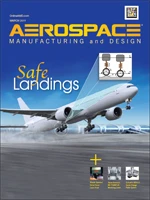 Calling on the need for greater Innovation and R&D in the U.S., a decidedly more “Pro-Business” Congress has taken some very positive legislative actions that will greatly benefit U.S.-based manufacturers. One area that is set to benefit more companies and its shareholders is the Research and Development (R&D) Tax Credit.
Calling on the need for greater Innovation and R&D in the U.S., a decidedly more “Pro-Business” Congress has taken some very positive legislative actions that will greatly benefit U.S.-based manufacturers. One area that is set to benefit more companies and its shareholders is the Research and Development (R&D) Tax Credit.
With tax time upon us, now is the time to evaluate whether the R&D Tax Credit warrants a look, or re-look, and if you can drop additional cash to your company’s bottom line!
As an incentive for companies to innovate, implement automation and technology, and take the steps necessary to compete more effectively on a global basis, the R&D Tax Credit was extended for two years – retroactive to January 1, 2010 and through December 31, 2011 – as part of the Tax Extenders Package signed by President Obama in November 2010. Yet, because of the specialized nature of the R&D Tax Credit, companies often mistakenly believe that they do not qualify or they do not get the advice that they do qualify.
The definition of Research and Development (R&D) is much broader than people realize. R&D does not just take place in a lab with a scientist in a white lab coat. Activities and costs associated with developing and/or improving a product or process can potentially generate R&D Tax Credits. Companies that design and develop their own products, such as those in the medical device, aerospace, cleantech, technology, software, and food industries, can see the more obvious R&D Tax Credit opportunities that exist. However, significant numbers of job shops/contract manufacturers are not utilizing the R&D Tax Credit. This includes among others, metal stampers and fabricators, precision machinists, mold builders and plastic injection molders, and toolmakers. While these companies manufacture parts and components for their larger OEM customers, they often downplay that they are doing any R&D. They often respond by saying, “We just get a drawing, and we make the part.” However, in reality they still have to determine if they can make the part, what is the best or most efficient way to make the part, and to make it profitably. The time spent on evaluating and resolving these uncertainties through activities like prototyping, testing, modeling, and simulating can qualify for the R&D Tax Credit. In addition, while the OEM’s sometimes do provide an initial drawing, they often look to their vendors for design and engineering support on concepts. It is not until a company begins assessing how people are spending their time that they realize quite a bit of that time can qualify for the R&D Tax Credit.
Additional and significant legislation also has a large impact, such as the Small Business Jobs Act of 2010, which allows for general business credits, such as the R&D Tax Credit, to be applied against the Alternative Minimum Tax (AMT) in 2010. In recent years, many S-corporation and partnership shareholders have been prevented from immediately using the R&D Tax Credits that they could generate because of the AMT. Also, many companies may have not paid much attention to the R&D Tax Credit as the economy slowed, and rightfully so, because they may not have had a tax liability to apply tax credits against, and/or they were more focused on crucial business activities like finding new customers and staying in business. Now, due to an improving economy and business picking up, more of these profitable companies and their shareholders will immediately benefit by using the R&D Tax Credit, which is a dollar-for-dollar reduction of a tax liability. This found money can be invested into even more R&D initiatives to expand your business.
For more information about the R&D Tax Credit or Black Line Group, contact Scott Schmidt at 763.550.0111, via email at scott@blacklinegrp.com, or online at blacklinegrp.com.

Explore the March April 2011 Issue
Check out more from this issue and find your next story to read.
Latest from Aerospace Manufacturing and Design
- The Partner Companies acquires Precision Eforming
- Hall Effect angle sensors
- July is for learning – so drop in for this month’s second Manufacturing Lunch + Learn
- Essential strategies to protect your data
- NASA selects instruments for Artemis lunar terrain vehicle
- Twin-cutter boring head
- Bell awarded funding for X-plane build phase of SPRINT program
- Shaft coupling clamps






